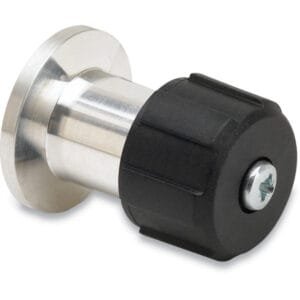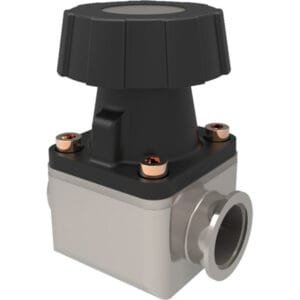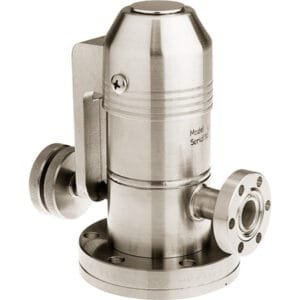Feedthrough Baseplate Coupling Plugs: Precision Blank-Off Solutions for 1″ Vacuum Feedthrough Couplings
Feedthrough Baseplate Coupling Plugs from TFM are specifically designed to securely seal unused 1″ baseplate ports in high-vacuum systems. These components are essential for maintaining vacuum integrity when a feedthrough coupling is not in active use, providing a reliable and clean method for blanking off open ports without disassembly or system modification.
Compatible with vacuum chamber walls ranging from 1/4″ to 1-1/4″ in thickness, these plugs are engineered for straightforward installation and dependable sealing. Whether you’re configuring a new system or retrofitting an existing vacuum platform, coupling plugs ensure operational flexibility while protecting sensitive environments from contamination or leaks.
Key Features of Feedthrough Baseplate Coupling Plugs:
Purpose-Built for 1″ Feedthrough Couplings
Designed to blank off feedthrough ports mounted through standard 1″ baseplate openings.Vacuum-Compatible Materials
Available in aluminum for lightweight use or stainless steel for robust, corrosion-resistant applications in high-purity or chemically active environments.Reliable O-Ring Sealing
Each plug includes a vacuum-rated o-ring, ensuring a leak-tight seal when inserted into the feedthrough coupling, with the o-ring positioned inside the vacuum chamber for optimal sealing performance.Supports Modular Vacuum Design
Allows you to reserve unused ports for future expansion or reconfiguration without compromising vacuum performance.Tool-Free Installation and Removal
Designed for easy insertion and extraction, enabling quick maintenance and flexible system control.
Applications:
Temporarily sealing unused feedthrough ports in research vacuum chambers
Preserving system vacuum integrity during phased upgrades
Isolating diagnostic or process ports when not in use
Protecting internal chamber environments from ambient air or contamination
Modular HV/UHV platform designs with configurable plumbing
TFM also offers feedthrough couplings, NPT-compatible tube fittings, and compression o-ring connectors to support comprehensive vacuum system configuration.
In summary, Feedthrough Baseplate Coupling Plugs are an essential part of vacuum infrastructure, providing high-integrity sealing and modular flexibility. With stainless steel and aluminum options and full o-ring compatibility, they offer a dependable solution for managing open feedthrough ports in critical vacuum environments.





Reviews
There are no reviews yet.